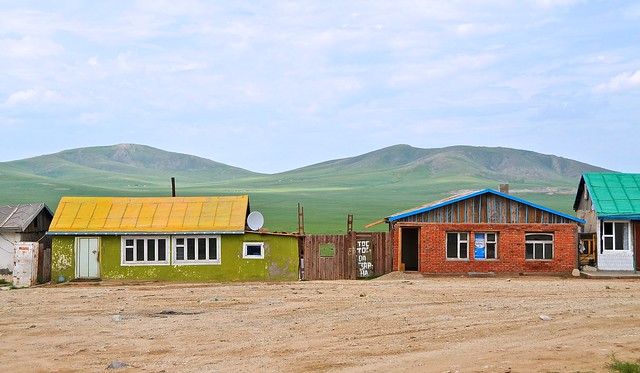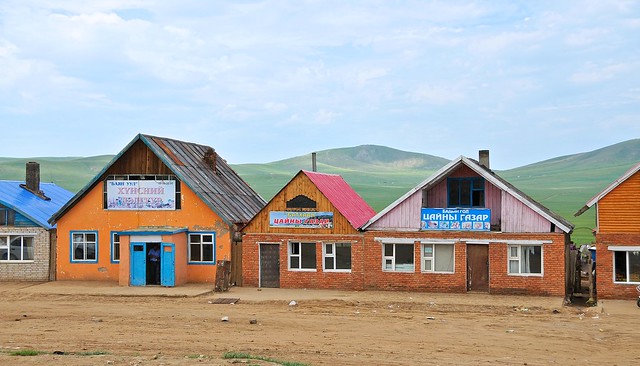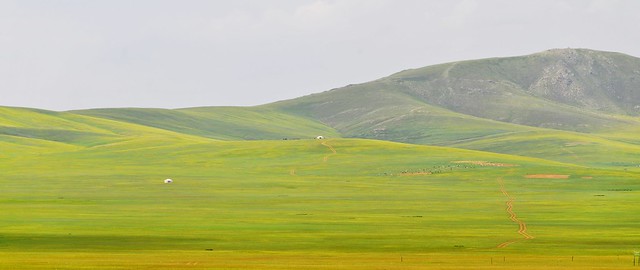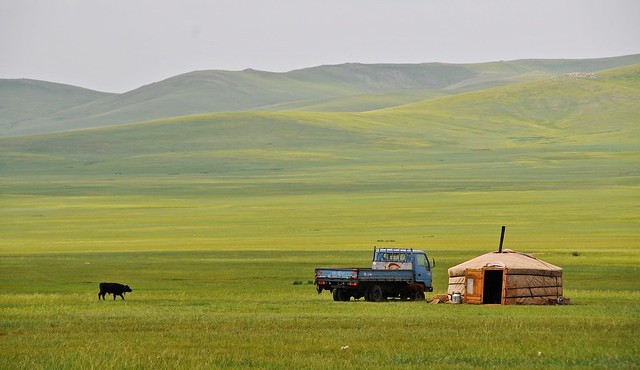I ended up staying in UB for the duration of Naadam, despite the rapidly diminishing returns after the second day, which was enough time to see the Choijin and Gandan moasteries.
On the 15th I caught the bus to Kharkhorin, as I figured I would do as much as I could in Mongolia independently and without taking a tour. But even something as simple as taking a bus isn't as simple as you might think. First of all, buses to all destinations don't even run every day, let alone at all hours. Buses to different places also leave from different locations, and it's difficult to get up-to-date information. Thankfully, the information office located in, of all places, the lobby of the Erel bank (located midway between Sukhbaatar square and the State Department Store along Peace avenue) had the bus schedules for the different station on file in a binder.
Getting a ticket at the western Dragon Bus Terminal proved somewhat difficult, however, as everything is in Cyrillic and the ticket windows did not seem arranged according to any discernible system: whatever was written above the windows was not the destinations the windows served. Add into that the Mongolian-wrestling style of queuing, and it was difficult to shove your way to the front and pantomime your question, especially since the attendants would rather deal with a pushy Mongolian speaker than a clueless foreigner. I eventually found the correct place to get a ticket, but it probably took a good 20 minutes.
I was one of the last to get on the bus, and my bag went into the same compartment as the jerry-cans being used to transport airag (fermented mare's milk). These can predictably leaked (this is why they were put in a different compartment than most luggage), but my bag only let a small amount of airag in, which was nice.
The trip itself took about 7 hours to cover the paved 350 km, with a break about midway at a small collection of buildings and shops. Everyone on the bus made a beeline to the toilets/outhouses, as Mongolians are very bad at holding their bladders. I suspect it is because—like the Chinese—they have not trained themselves to hold it. Kids are encouraged to go wherever and whenever they want, and this seems to carry over into adulthood (they can obviously go whenever they want when living as nomads).
I spent the break taking pictures.





No comments:
Post a Comment